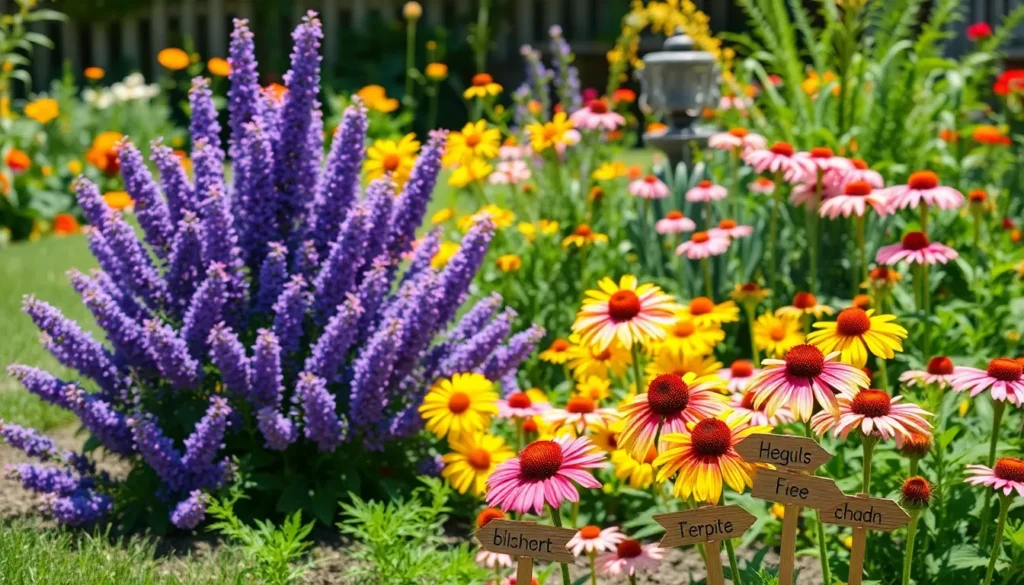Imagine stepping into your backyard and being greeted by a flutter of vibrant butterflies, each one adding a splash of color and life to your personal oasis. Creating a butterfly garden is not only a delightful way to enhance the beauty of your outdoor space, but it also plays a crucial role in supporting these essential pollinators whose populations are increasingly threatened. For both budding green thumbs and seasoned horticulturists, the journey to cultivating a butterfly sanctuary is a rewarding endeavor that offers continuous learning and delight.
In this article, we’ll guide you through the fundamentals of designing a butterfly-friendly garden that will thrive in your backyard. You’ll discover the best plant selections to attract and sustain butterflies, the secrets to providing necessary habitat features, and how to maintain an environment where these gentle creatures can flourish. With a few thoughtful choices and some dedicated care, your garden can become a vibrant sanctuary that supports biodiversity and offers endless enjoyment. Whether you’re starting from scratch or enhancing an existing garden, we’ll equip you with the knowledge and inspiration to create a welcoming haven for butterflies and a source of joy for you.
Select Native Butterfly Plants
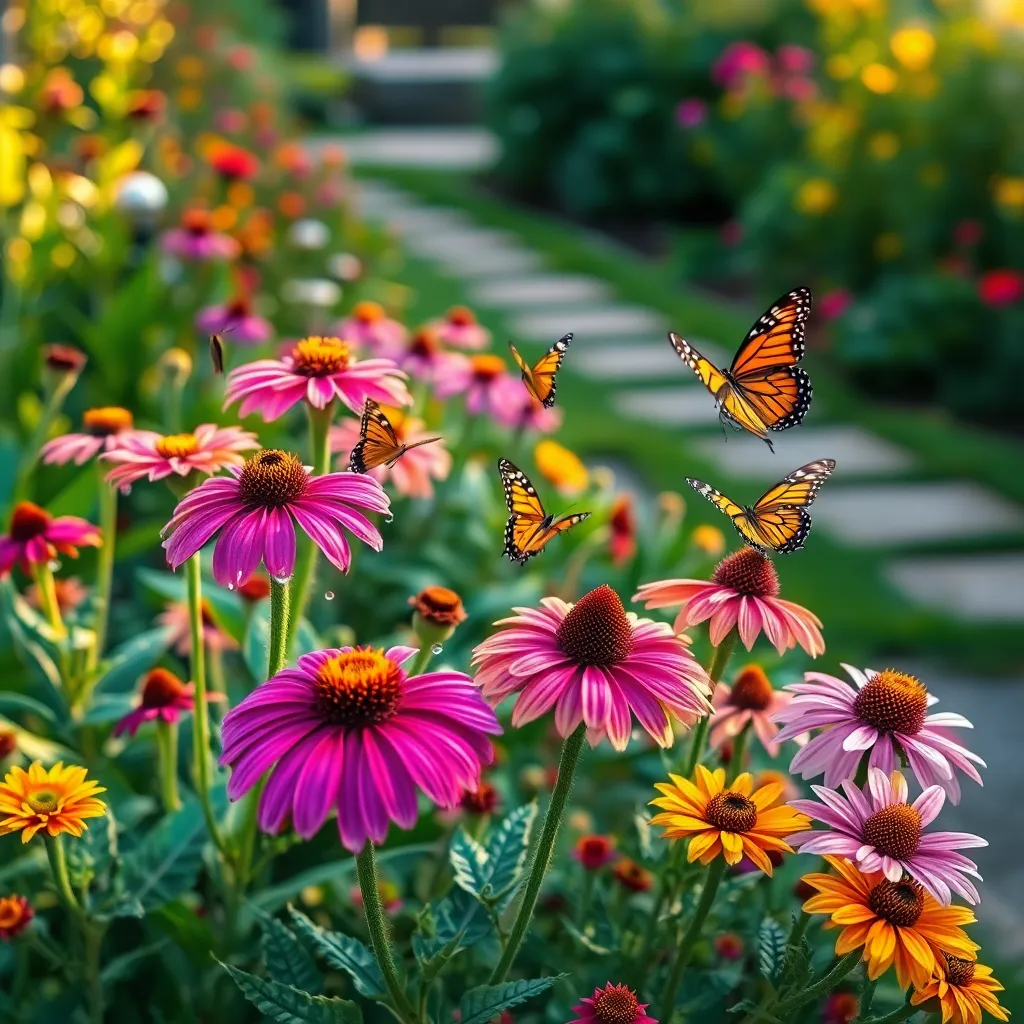
One of the most effective ways to attract butterflies is by selecting native plants that cater to their lifecycle needs. Native plants are adapted to the local environment, making them easier to grow and maintain while providing essential nectar and host resources for butterflies.
To start, research which butterfly species are native to your region and the plants they prefer. This information can be found through local extension services or native plant societies, ensuring that you choose the ideal plants for your area.
Consider incorporating milkweed if you live in an area where monarch butterflies are prevalent, as it serves as both a nectar source and a host plant. Milkweed requires full sun and well-drained soil, and once established, it is drought-tolerant, reducing the need for frequent watering.
For a variety of butterflies, include plants like coneflowers and black-eyed Susans, which provide abundant nectar. These plants thrive in full sun and average soil conditions, and deadheading spent blooms can encourage more flowering throughout the season.
Aim to plant in clusters, which makes it easier for butterflies to locate the blooms. Groupings also provide more visual appeal and can help create microclimates that enhance plant growth and butterfly activity.
Design a Sunlit Layout
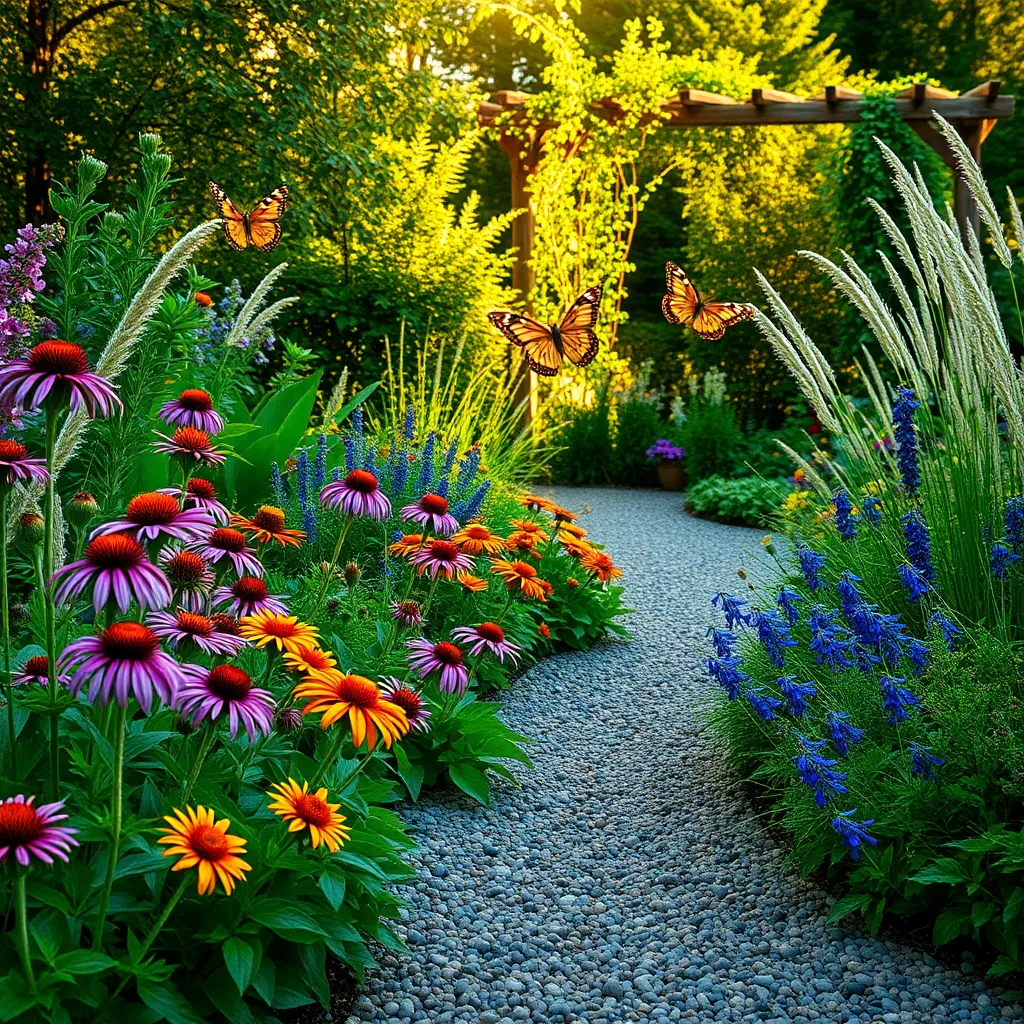
To create an inviting space for butterflies, ensure your garden layout maximizes sun exposure. Most butterfly-friendly plants require six to eight hours of sunlight daily for optimal growth and blooming.
Position taller plants like sunflowers or Joe-Pye weed toward the back of your garden bed. This technique not only provides a sunlit backdrop but also prevents them from casting shade on smaller plants that thrive in full sun.
For a more structured approach, consider grouping plants by their sun and water requirements. This allows for efficient irrigation and ensures each plant receives the right amount of moisture without overwatering or underwatering.
Incorporate a variety of colors and textures to attract diverse butterfly species. Using a mix of perennials and annuals can extend the blooming season, providing a continuous food source for butterflies throughout the growing months.
Prepare Soil with Compost
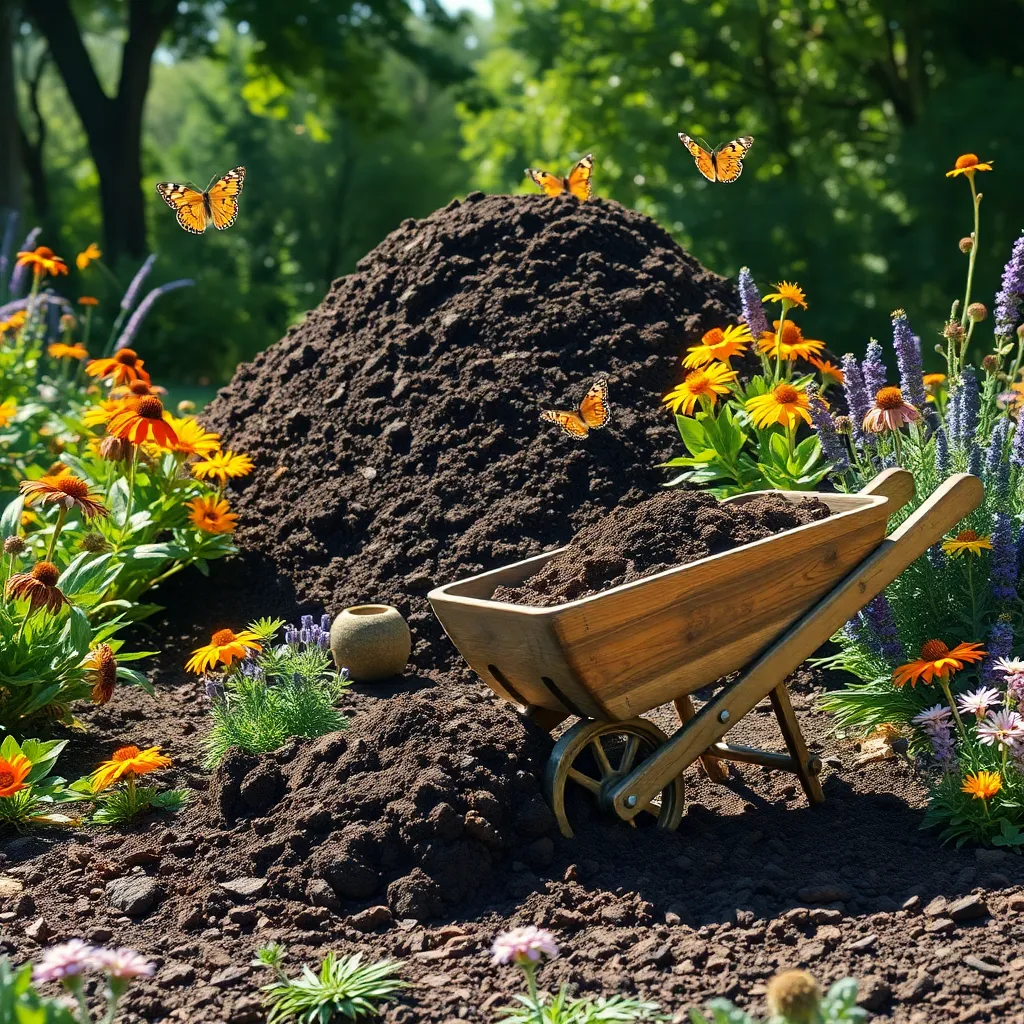
To create a thriving butterfly garden, preparing your soil with compost is a crucial step. Compost enriches the soil with essential nutrients and improves its structure, making it ideal for butterfly-attracting plants.
Begin by spreading a layer of compost about 2-3 inches thick over your garden area. Work this compost into the top 6-8 inches of soil using a garden fork or tiller, ensuring thorough mixing for even nutrient distribution.
Not only does compost improve soil fertility, but it also enhances moisture retention, which is vital for plant health. This is particularly beneficial during dry spells, as your soil will retain more water, reducing the need for frequent watering.
For beginners, a simple compost pile can be created from kitchen scraps, lawn clippings, and leaves. Advanced gardeners might consider vermicomposting, which uses worms to produce nutrient-rich compost even faster.
Once your soil is enriched with compost, it becomes a thriving environment for butterfly-friendly plants like milkweed and coneflowers. These plants, in turn, support the butterfly lifecycle, encouraging these delightful creatures to visit your garden regularly.
Plant Flowers in Clusters
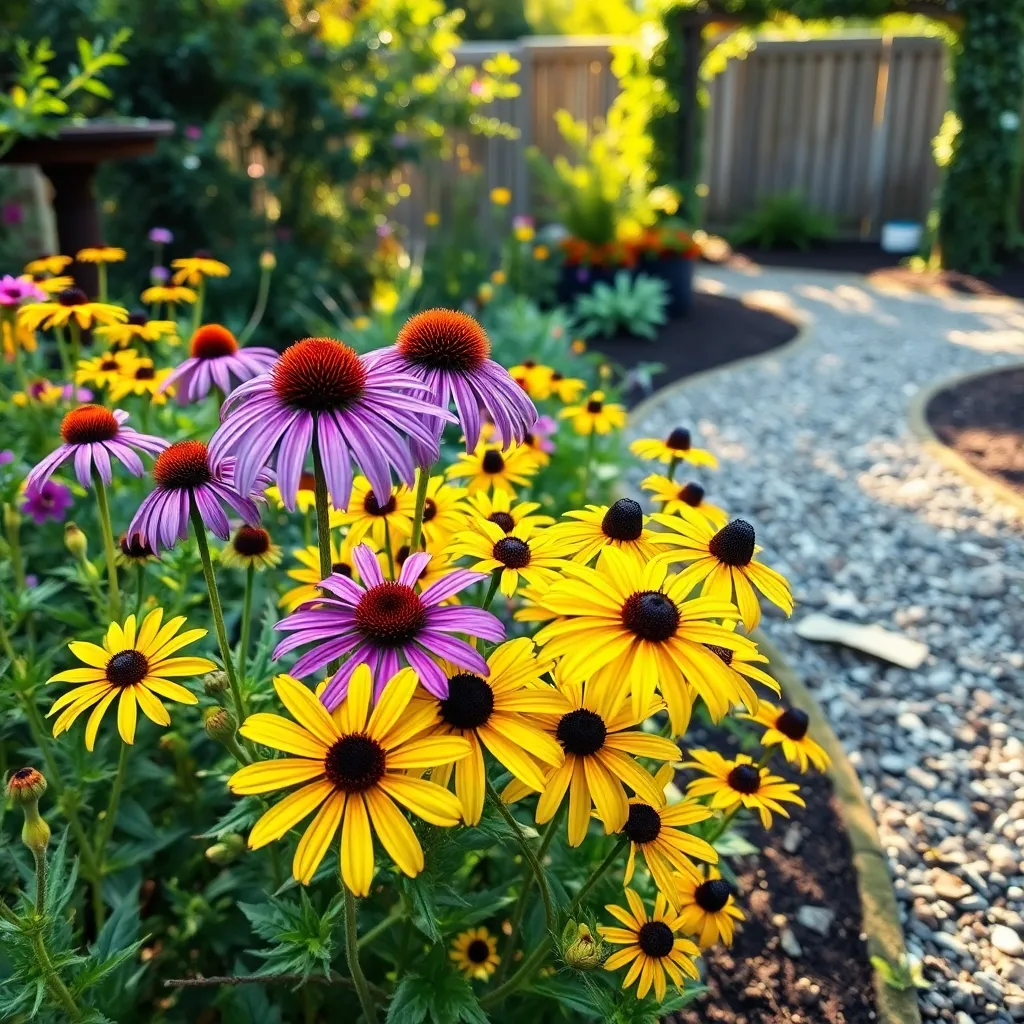
To attract butterflies, planting flowers in clusters can greatly enhance your garden’s appeal. Grouping plants together not only creates a visually stunning display but also makes it easier for butterflies to find and feed on the nectar.
Choose a variety of flowers with different bloom times to ensure a continuous supply of nectar throughout the season. Ideal plants include coneflowers, milkweed, and zinnias, which are all known to attract butterflies.
When planting flowers in clusters, aim for groups of at least three to five plants of the same species. This density allows butterflies to efficiently move from flower to flower without expending too much energy.
Consider the sunlight requirements of your chosen plants, as most butterfly-attracting flowers thrive in full sun. Ensure your clusters are placed in areas that receive at least six hours of sunlight a day, which is crucial for healthy plant growth and abundant blooms.
For advanced gardeners, incorporate a mix of heights and textures by including taller plants like liatris alongside shorter blooms like marigolds. This layered approach not only adds visual interest but also provides different landing spots for various butterfly species.
Add Water and Shelter Sources
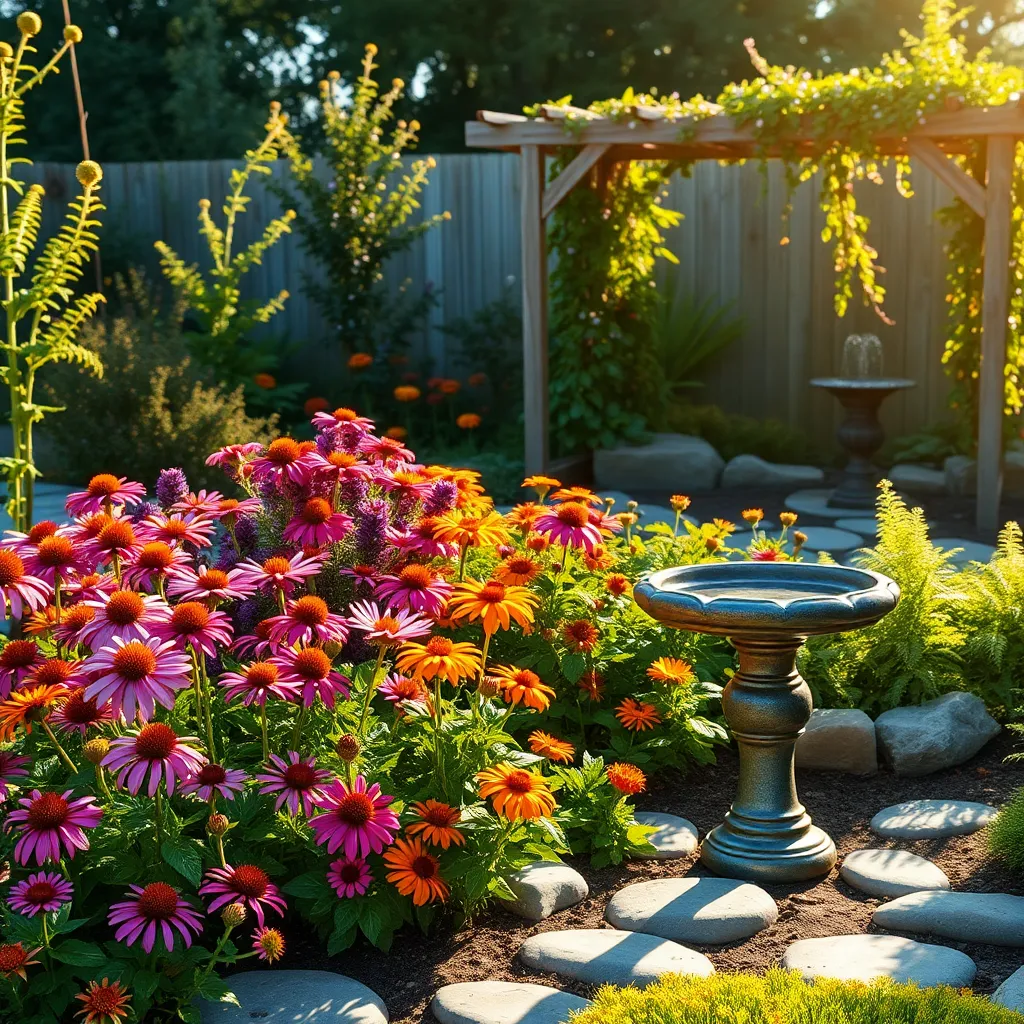
To attract butterflies to your garden, providing a reliable water source is essential. Consider creating a shallow water feature, such as a birdbath or a dish with stones, to offer a safe landing spot for these delicate insects.
Butterflies need shelter to protect themselves from harsh weather conditions and predators. Planting shrubs or small trees around the garden can serve as both a windbreak and a place for butterflies to rest.
It’s beneficial to incorporate a mix of sun and shade areas within your garden. This variation allows butterflies to regulate their body temperature by basking in the sun or seeking shade when necessary.
You can also add a mud puddle in a sunny spot, which provides essential minerals and hydration. Simply dig a shallow depression, line it with plastic, and fill it with a mix of sand and soil to hold moisture.
For those looking to enhance their butterfly garden further, consider using specific plants as natural shelters. Dense perennials like coneflowers and black-eyed Susans not only provide nectar but also offer hiding spots.
To maintain these water and shelter sources effectively, ensure they are kept clean and free of algae. Regularly refresh the water in baths and puddles to prevent stagnation and maintain a healthy environment.
Conclusion: Growing Success with These Plants
In creating your own butterfly garden, you’ve embarked on a journey that parallels the nurturing of any fulfilling relationship. We’ve explored five key concepts: creating a welcoming environment, choosing diverse elements to foster growth, nurturing with patience and care, understanding the value of timing, and embracing the beauty of transformation. These principles are not only essential in attracting butterflies but are equally powerful in cultivating meaningful human connections.
As your actionable next step, take a moment to identify one relationship in your life that could benefit from a little extra care. Apply the principles you’ve learned: whether it’s listening more intently, adding a touch of spontaneity, or simply being present, small actions can lead to profound changes.
Be sure to bookmark this article for future reference. By doing so, you’ll have a handy guide to revisit whenever you need a reminder of how to enrich your personal and relational garden.
Remember, the seeds you plant today will blossom into the flourishing relationships of tomorrow. Empower yourself to nurture them with intention, and watch as even the smallest efforts bloom into lasting harmony. Let’s grow our connections, one thoughtful step at a time.

